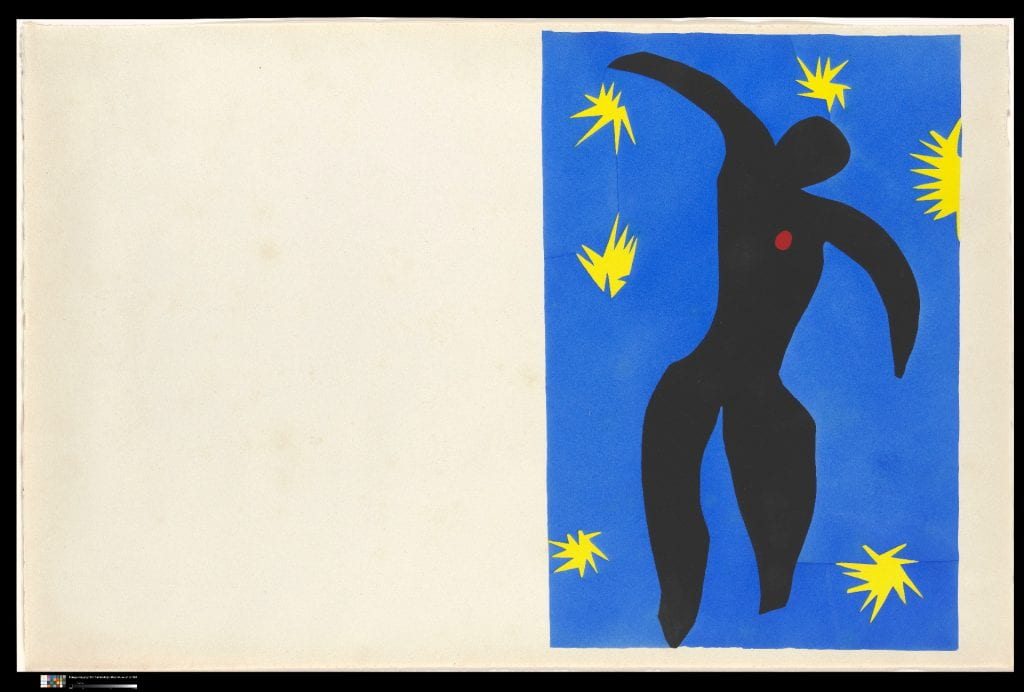Why do myths continue to be told in visual art, literature, and popular media? Why do these stories hold so much power over our collective imagination, centuries or millennia after their first appearance? This exhibition explores our fascination with myths through the story of Icarus, who ruined his wings by flying close to the sun, condemning him to a tragic end. With the help of artists from the Early Modern to the present such as Pieter Bruegel the Elder, Henri Matisse, and Varujan Boghosian, 20thcentury poets, and contemporary musicians, we can unravel how and why the Icarus myth is still told, retold, and reinvented.
Timeline – Explore featured artists and their works
The Roman poet Ovid produces Metamorphoses, featuring the story of Icarus and his father Daedalus.
About 8 CE
Dutch artist Pieter Bruegel the Elder paints Landscape with the Fall of Icarus, now housed in the Royal Museum of Fine Arts, Belgium.
English satirist James Gillray publishes his print The Fall of Icarus, mocking the relationship between King George III (ruled 1760-1820) and his bureaucrats.
1807
1939
Anglo-American poet W.H. Auden publishes “Palais des Beaux Arts” in New Writing Magazine, later titled “Musée des Beaux Arts.” The poem was written in 1938 while Auden lived in Brussels.
French Artist Henri Matisse publishes his illustrated book, “Jazz,” featuring this pochoir print of his Icarus. An edition of “Jazz” is held in the Metropolitan Museum of Art’s collection (© 2021 Succession H. Matisse / Artists Rights Society (ARS), New York)
1960
William Carlos Williams publishes “Landscape with the Fall of Icarus” in The Hudson Review, which was later included in his book Pictures from Brueghel and other poems (1962).
Anne Sexton includes “To a Friend Whose Work Has Come to Triumph” in her published collection To Bedlam and Part Way Back.
Mexican artist Xavier Esqueda finishes his collage The Relatives of Icarus (Los Parientes de Icaro).
1965
Varujan Boghosian creates several collages related to the fall of Icarus. Three of these collages, The Fall of Icarus (1991), The Fall of Icarus (The Oasis) (1991), and The Fall of Icarus (For W.H. Auden) (1993), are in the Hood’s collection. His earlier Icarus collage, a 1986 The Fall of Icarus resides in the Currier Museum’s collection, while his 2010 collage The Flight of Icarus is in Keene State College’s holdings.



You must be logged in to post a comment.